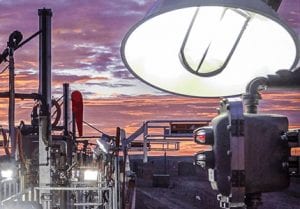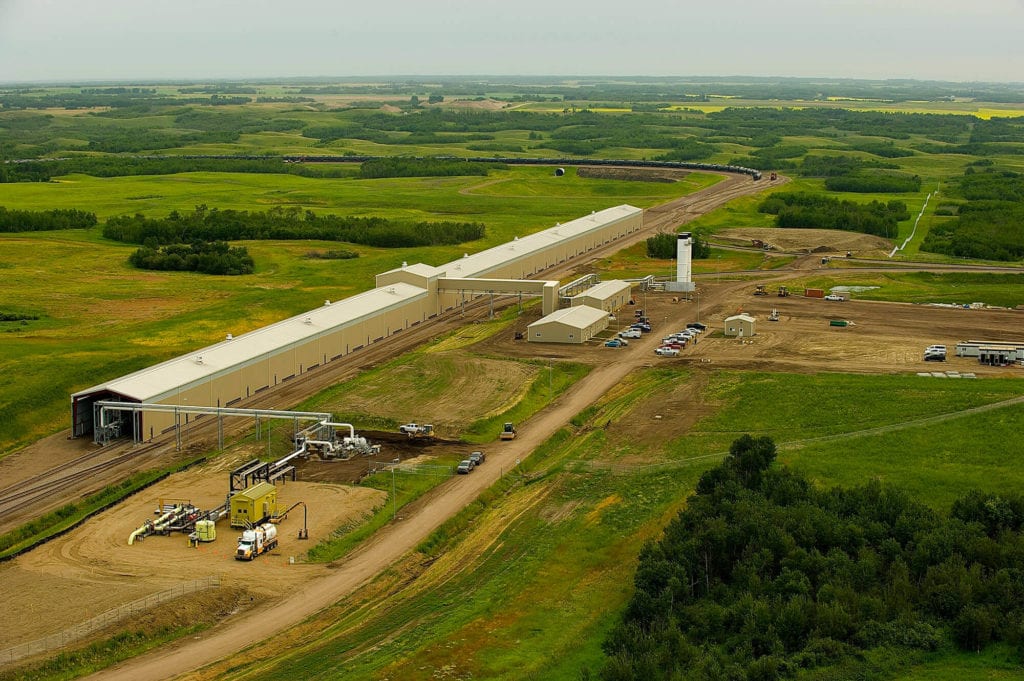Get a quote, configure a custom safety solution or ask a question. We're here to help!








- Spill ContainmentMore …Loading Safety CagesMore …
SafeRack Worldwide
We pride ourselves on one-on-one customer service. When you call SafeRack, we'll be there to answer your questions with a combined experience of 400+ years.
Select your region below.- View Products
- Railcar & Truck Loading Platforms
- Gangways & Loading Ramps
- Stairs, Platforms & Ladders
- Mobile Ladders & Platforms
- Loading Arms & Fluid Transfer
- Safety Gates & Traffic Control
- Aviation & Aerospace Access
- Marine Access & Loading
- Grounding & Monitoring
- Spill Containment
- Loading Safety Cages
- Transloaders & Skids
- Shelters & Canopies
- Fall Protection
- Terminal & Speciality
Home / Industries / DEF (Diesel Exhaust Fluid)DEF (Diesel Exhaust Fluid) Loading
DEF Handling Design Loading and Installation Experts
SafeRack takes worker safety very seriously and offers a full range of products and equipment designed specifically to reduce the risks associated with DEF transportation while improving loading and unloading throughput.
Operator and Environmental Safety – SafeRack has been providing safe, reliable platforms, handrails, and gangway solutions to the chemical industry for many years. From multifaceted fall prevention retrofits to new builds, SafeRack’s priorities are operator and environmental safety while still focusing on creating an efficient and productive solution that allows a significant return on investment.























Question, Get a Quote, Live Demo or Request an On-Site Visit
Our experts simplify the complex
View Full TextTypical DEF Loading Platform
Quote or discuss your installation.
Start by selecting loading application"*" indicates required fields
Below are some of the loading and unloading solutions for illustrative purposes only. Our experts will work with you and your team for a custom solution to suit your needs.
DEF Loading Arms

DEF is typically loaded into railcars via chemical hoses or loading arms. The current best loading practice is to use a 3″ chemical hose or a carbon steel loading arm with quick-acting coupling, often in the form of Hammer Unions with stabber pipe. The chemical hose or loading arm will have a top inlet with a control valve to ensure that it is self-draining after use and is supported along the length of a mechanical loading arm to improve handling; this is known as a by-pass arm. You can install one liquid and one vapor arm, or mount both the liquid and vapor hoses on one by-pass arm.
Break-away couplings can be fitted near the inlet of the hose for additional safety in the event of a premature departure.
Loading Gangways and Safety Cages

A wider access gangway (36″- 48″ is preferable) as it helps improve access and egress to and from the vessel. In addition, a wider gangway will reduce the risk of the operator’s PPE getting caught, torn or damaged, and will improve productivity and safety. Powered gangway solutions are also an option, with both hydraulic and pneumatic solutions being commonly used. Each gangway will be fitted with a two-rail safety cage for the railcar crash box. This will be a centered 6’x8’ safety cage to sit directly over the cashbox. This will provide a safe, secure work environment for your operator when connected to their breathing apparatus

GX SELF-ADJUSTING STAIR (SAS) GANGWAY
SafeRack’s NEW GX SAS gangways uses Retractalok power-assist technology allowing operators to raise or lower effortlessly, light as a feather to lift, solid as a rock. Tested in the most critical applications, this revolutionary new gangway outperforms all others. Available in multiple lengths and widths. Learn More
DEF Eye Wash/Drench Showers

ANSI guidelines state that an Eye Wash/Drench Showers need to be located 10 seconds or 55’ (16.8m) from contaminants or hazardous materials. Eyewash stations need to be on the same horizontal plane with no obstructions.
Therefore, we would propose the installation of a standard combination Drench Shower/Eyewash Unit, which will save limited space and fit easily into any work environment.
DEF Spill Containment

Spill containment pans will be provided at the point of loading operations and is an essential piece of equipment in overall site safety and environmental protection DEF Grounding

While not highly flammable, high airborne concentrations can be ignited and pose a significant fire and explosion hazard, especially in confined spaces. Steel containers or vessels of ammonia may also explode when subject to excessive heat or high temperatures. Industry best practice includes the grounding of all vessels prior to starting the (un)loading process. - Ground controllers — ensure true grounding before product flow is permitted
- Explosion-proof enclosures — meet or exceed UL, CSA and Ex requirements
Safety Gates DEF Loading Applications

Safety Gates will be installed at the top of stairs and any other openings to ensure operator safety at all times.  YellowGate Safety Gates
YellowGate Safety GatesSafeRack’s line of industrial safety gates is the most flexible product on the market with the ability span openings between 16” and 36” and is field adjustable with nothing more than a wrench. Learn More
DEF Loading Platform Options

- Lighting – Lighting both over and under the platform will be provided. For overcast days or second shift, lighting is essential for improved safety and improved productivity.
- Platform & Canopies – Full platform canopies reduce exposure to the elements and improve the safe and productive loading operation from the operator’s perspective.
- Operator Shelter – Depending on your site requirements, consideration should be given to the requirement of an operator or guard building on the loading platform. This can be customized to meet specific site requirements
- Wheel Chocks – Railcar Wheel Chocks provide fast blocking of all types of railcars and meet OSHA regulations to safely prevent railroad cars from moving during loading or unloading operations. This is a requirement by the Department of Homeland Security
Personal Protective Equipment PPE Requirements
Eye/Face Protection: Wear chemical safety goggles. A face shield (with safety goggles) may also be necessary. Skin Protection: Wear chemical protective clothing e.g. gloves, aprons, boots. Coveralls or long sleeve shirts and pants in some operations. Wear a chemical protective, full-body encapsulating suit, and self-contained breathing apparatus (SCBA). Suitable materials include butyl rubber, neoprene rubber, Viton®, Viton®/butyl rubber, Barrier® – PE/PA/PE, Silver Shield® – PE/EVAL/PE, Trellchem® HPS, Trellchem® VPS, Saranex®™, Tychem® BR/LV, Tychem® Responder® CSM, Tychem® TK. The following materials should NOT be used: natural rubber, polyvinyl chloride. Recommendations are NOT valid for very thin neoprene rubber gloves (0.3 mm or less).
Respiratory Protection: Up to 5 ppm:
(APF = 10) Any chemical cartridge respirator with cartridge(s) providing protection against chlorine*; or Any supplied-air respirator*.
*Reported to cause eye irritation or damage; may require eye protection.
APF = Assigned Protection Factor
Recommendations apply only to National Institute for Occupational Safety and Health (NIOSH) approved respirators. Refer to the NIOSH pocket guide to chemical hazards for more information.
Use local exhaust ventilation and enclosure, if necessary, to control the amount in the air. Consider using a corrosion-resistant exhaust ventilation system separate from other ventilation systems. It may be necessary to use stringent control measures such as process enclosure to prevent product release into the workplace. Use backup controls (e.g. double mechanical pump seals) to prevent the release of this material due to equipment failure. * For illustrative purposes only. Our experts will work with you and your team for a custom solution to suit your needs We recommend that you also refer to the Chlorine Institute, found at chlorineinstitute.org. The Chlorine Institute (CI) was founded in 1924 and is a technical trade association of companies involved in the safe production, distribution and use of chlorine, sodium and potassium hydroxides and sodium hypochlorite, the distribution and use of hydrogen chloride and the distribution of vinyl chloride monomer.
DEF 101
Things to know about Diesel Exhaust Fluid (DEF)
DEF, also known as AUS 32, is mixture of (typically) 2/3 deionized water and 1/3 urea… The hot exhaust gas and DEF then enter the catalytic converter where the urea from the DEF and the exhaust gas react with a variety of metallic compounds to convert dangerous nitrogen dioxide and monoxide into harmless nitrogen and water.
Diesel engines can be run with a lean burn air-to-fuel ratio (overstoichiometric ratio), to ensure the full combustion of soot and to prevent their exhausting unburnt fuel. The excess air necessarily leads to generation of NOx, which are harmful pollutants, from the nitrogen in the air. SCR is used to reduce the amount of NOx released into the atmosphere. DEF from a separate tank is injected into the exhaust pipeline. Within the SCR catalyst, the NOx are reduced by the ammonia into water and nitrogen, which are both less polluting. The water and nitrogen are then released into the atmosphere through the exhaust.
Bulk volumes of DEF are often transported by railcar or truck and can be stored in polyethylene containers, fiberglass reinforced plastic (FRP), and steel tanks. DEF is also often transported and stored in IBC or intermediate bulk containers.

DEF Handling
Diesel Exhaust Fluid (DEF) is clear and is safe the handle and non-toxic. In fact, of all the fluids used in a truck, such as diesel, engine oil, brake fluid, and antifreeze, DEF is the least hazardous. DEF does sometimes have a slight ammonia smell (similar to home cleaning agents), but these are not harmful.
It can corrode some metals and must be stored and transported carefully. It is recommended that DEF be stored in a cool, dry, and well-ventilated area that is out of direct sunlight.
Diesel exhaust fluid is offered to consumers through a variety of quantities ranging from containers for single or repeated small usage, up to bulk carriers for consumers requiring a large amount of DEF.
Personal Protective Equipment: Wearing protective clothing is not necessary when handling DEF, however, it can stain clothes. If you do spill any DEF on your clothing, rinse it off with water.
Spill Containment: Small amounts of DEF can be washed away with water or wiped up. If left to dry it will turn into white crystals. These can be washed away with water. As when transferring any bulk chemical, industrial spill containment solutions are needed.
Fumes: Inhalation is not expected under normal conditions, However, when pumping Diesel Exhaust Fluid (DEF) in a closed area or in bulk, it is possible that inhalation of ammonia fumes from DEF might occur. If inhales, it’s recommended to get fresh air. I physician should be consulted for prolonged exposure or symptoms, such as irritation to nose or throat.
Selective Catalytic Reduction – SCR reduces levels of NOx (oxides of nitrogen emitted from engine exhaust), a major contributor to pollution. SCR is a process and technology that treats exhaust. Small quantities of diesel exhaust fluid (DEF) are injected into the exhaust. The DEF vaporizes and decomposes to form ammonia and carbon dioxide. The ammonia (NH3) with the SCR catalyst, converts the harmful nitrogen oxide (NOx) into harmless nitrogen (N2) and water (H2O).

Customer Reviews
4 5The system is a safe means of loading our trucks.Travis McCraine was very responsive. The system is a safe means of loading our trucks. I’d recommend it.
By Stacey Hoover from CMS Land on 2/13/12 5 5The spill containment is great and will work the best for what we are doing.
5 5The spill containment is great and will work the best for what we are doing.The customer service was great. I got to talk to someone in the area and we were able to be understood. The spill containment is great and will work the best for what we are doing.
By Mike Wickersheim from Sentinel Transporation, LLC on 11/7/12 5 5SafeRack has a really short lead time.
5 5SafeRack has a really short lead time.I received an order acknowledgement shortly after sending in the purchase order. It was exactly what our engineering department wanted.
By Mark Heirigs from Kolberg-Pioneer, Inc. on 11/7/17 4 5Thank you for a great experience.
4 5Thank you for a great experience.The entire transaction was very pleasant. Jason Stewart was very professional and responsive. The Customer Service was outstanding, and the product arrived as ordered, on time, and with appropriate email communications. I have added this to my favorites, and will continue to do business with you. Thank you for a great experience.
By Bill Ruoff from Chevron USA on 10/11/11 5 5Extremely Satisfied with SafeRack
5 5Extremely Satisfied with SafeRackThe material & info you send is easy to read & understand, any questions are answered promptly & your products are easy to install & well made.
By Chris Davidson from Irving Oil on 5/16/22 5 5The salesperson was very responsive. The product was delivered fast.
5 5The salesperson was very responsive. The product was delivered fast.I was concerned about the product not fitting our space, but it meets our needs and works very well. The overall experience with SafeRack was positive.
By Larry Parker from Cemex on 11/8/16
Is your plant or facility compliant with ANSI, OSHA, and local safety codes? We can help!


EMERGENCY EYEWASHES / SHOWER EQUIPMENT AND THE ANSI/ISEA Z358.1 – 2014 STANDARD
Following eye contact, you must start washing with water immediately to prevent permanent damage. In the event of skin contact, you must start washing with water immediately to prevent slow-healing chemical burns.
Are you aware that ANSI guidelines state that Eye Wash/Drench Showers need to be located 10 seconds or 55′ from contaminates or hazardous materials and located on the same horizontal plane, with no obstructions? If bottom loading/unloading, an additional shower should be located at grade as well. SafeRack provides the above equipment plus much more needed to keep employees safe and expedite bulk chemical loading and unloading.
OSHA Regulation Experts – Does your existing chemical safety equipment or chemical loading systems meet OSHA’s latest requirements? SafeRack’s professional technical sales consultants are available to meet with your team to make recommendations to keep your facility in front of OSHA’s ever-changing country and region-specific standards and regulations, including lifeline and trolley beam fall arrest systems, metal stairs, and access platforms.
Installation Gallery
Why SafeRack?
The SafeRack approach is a collaborative one. Let’s call it The SafeRack Way. We have, over many years amassed a great deal of experience and understanding of the safety aspects involved in loading road tankers and railcars, as well as the behavioral habits of the operators.

Experts In Chemical Loading
- Acetic Acid
- Acetic Anhydride
- Acetonitrile
- Acrolein
- Acrylic Acid
- Acrylonitrile
- Aluminum Chloride
- Aluminum Sulfate
- Ammonia
- Ammonium Hydroxide
- Ammonium Nitrate
- Aniline
- Benzene
- Benzyl Chloride
- Bromotrifluoromethane
- Butadiene
- Carbon Dioxide
- Caustic
- Chlorine
- Chloroform
- Chlorosulfonic Acid
- DEF (Diesel Exhaust Fluid)
- Diethylene Glycol
- Dimethylformamide
- Dodecylbenzene Sulfonic Acid
- Ethanol
- Ethyl Acetate
- Ethyl Chloride
- Ethylene
- Ethylene Dichloride
- Ethylene Glycol
- Ethylene Oxide
- Ferric Chloride
- Ferrous Chloride
- Hexane
- Hydrochloric Acid
- Hydrofluoric Acid
- Hydrofluorosilicic Acid
- Hydrogen Cyanide
- Hydrogen Peroxide
- Hydrofluoric Acid
- Hypochlorous Acid
- Isopropyl Acetate
- Liquid Argon
- Liquid Nitrogen
- Liquid Oxygen
- Maleic Anhydride
- MDI
- Methanol
- Methyl Chloride
- Methyl Ethyl Ketone
- Methyl Methacrylate
- Methyl Isocyanate
- Molten Sulphur
- Nitric Acid
- Oleum
- Phenol
- Phosphoric Acid
- Phosphorus Oxychloride
- Phosphorus Trichloride
- Polypropylene
- Renewable Diesel
- Sodium Cyanide
- Sodium Hydroxide
- Sodium Hypochlorite
- Styrene Monomer
- Sulfuric Acid
- Sulfur Dioxide
- Titanium Tetrachloride
- Toluene
- Toluene Diisocyanate
- Turpenitne
- UAN (Urea Ammonium Nitrate)
- UREA
- Vinyl Acetate
- Vinyl Chloride
- Xylene
- Zinc Chloride
- Agro-Chemical
- Specialty Chemical
- Petrochemical

North America’s largest loading terminal
World-leading designer, manufacturer, and installer of truck and railcar loading platforms
As one of the primary railcar loading points, Hardisty is one of the major crude oil hubs in North America and a major origination point of pipelines that export to the United States. SCS was asked to supply and construct a SafeRack crude oil loadout terminal spanning nearly half a mile. The USD Hardisty terminal can load up to two 120-railcar unit trains per day and consists of a fixed loading rack with 62 railcar loading positions enclosed, separate control, operator, and mechanical buildings, as well as a unit train staging area and loop tracks capable of holding multiple unit trains simultaneously. SCS also supplied and installed boom-supported loading arms with supply and vapor management systems.

Quick Quote 866-761-7225
LET US DESIGN YOUR SOLUTION TODAY
Our innovative tools provide 3D visualizations and accurate quotes in minutes.
Get Help NowOrder Now 866-761-7225
Questions or Need a Quote?
Chat live with a knowledgeable and friendly safety expert now.

Bob Kashtan
Located in South Carolina

Joey Robinson
Located in South Carolina

Caelin Lacy
Located in South Carolina

Katie Kelly
Located in South Carolina

Amber Graham
Located in South Carolina






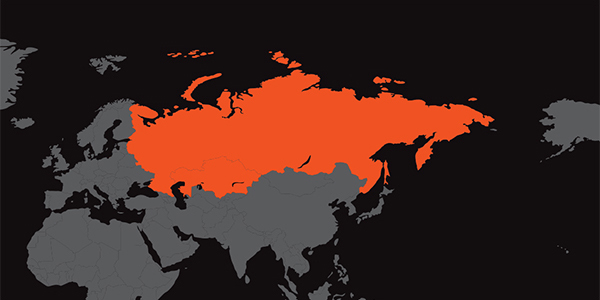
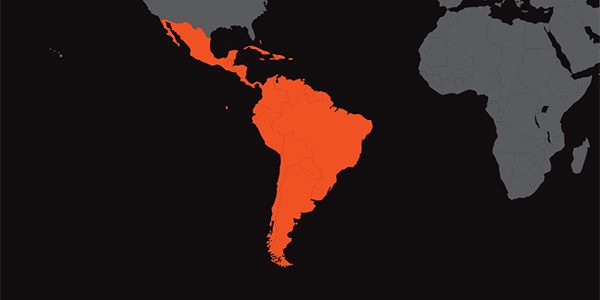






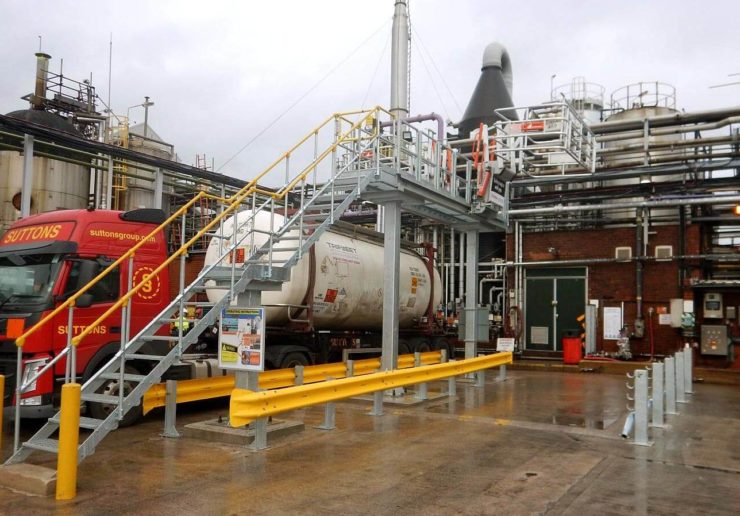
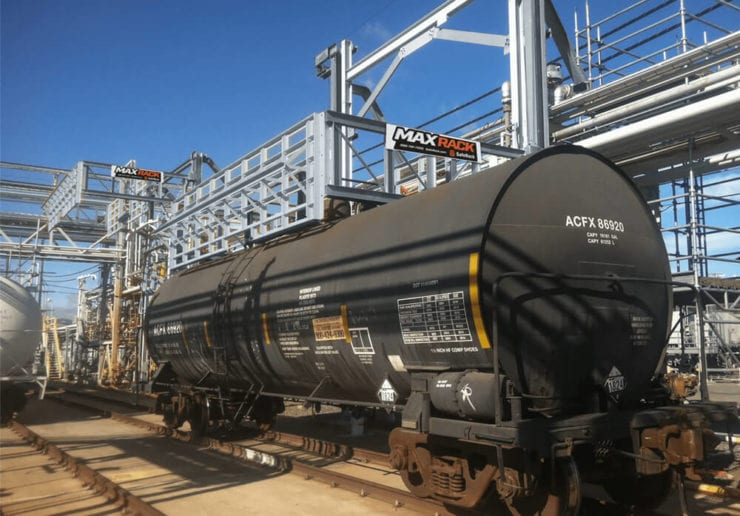


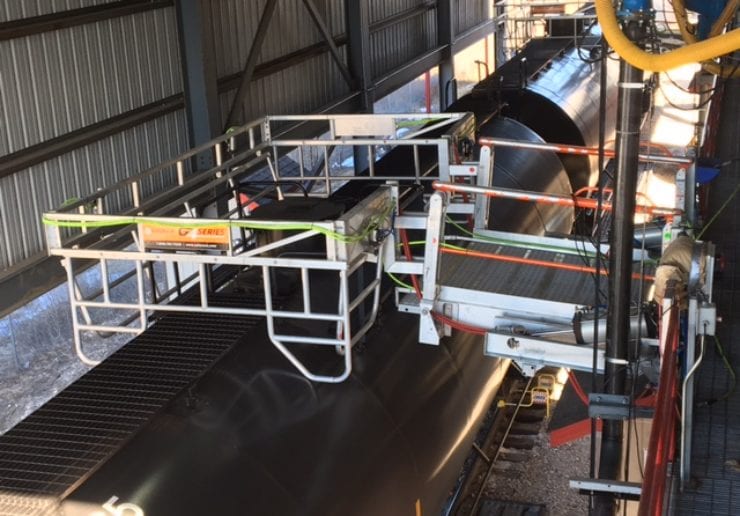
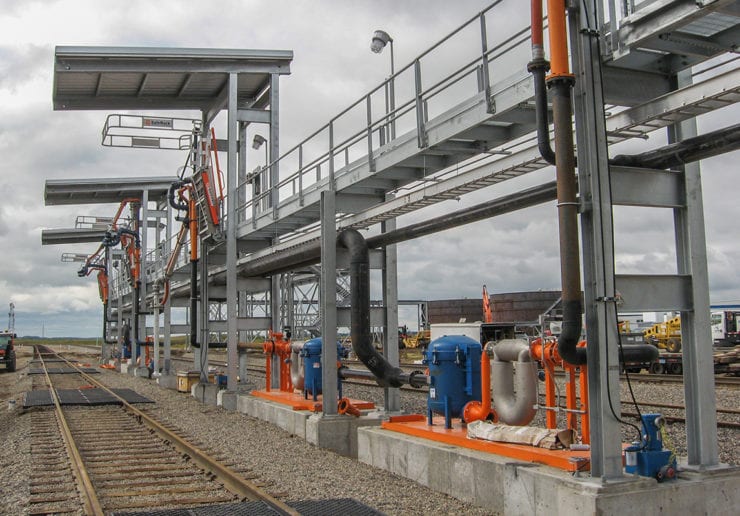

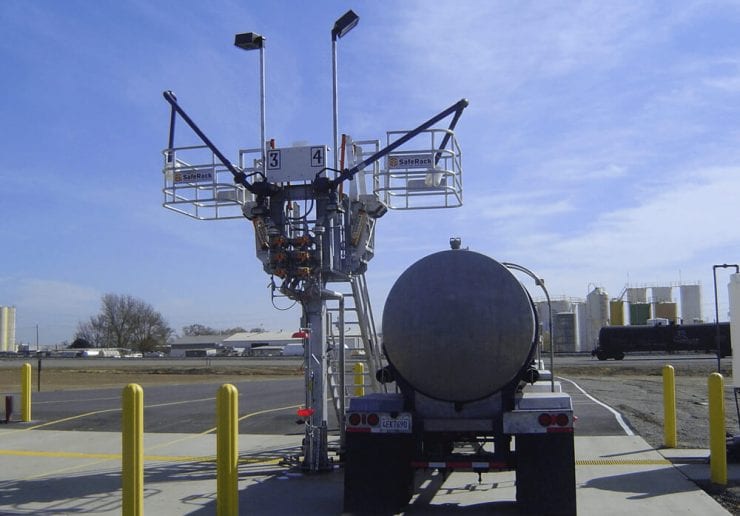
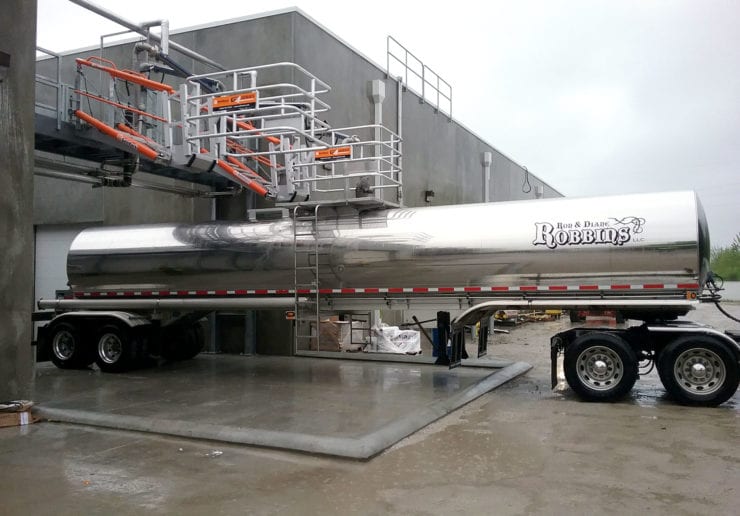


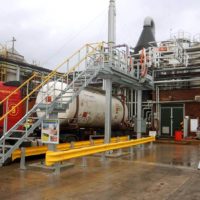
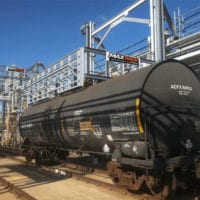
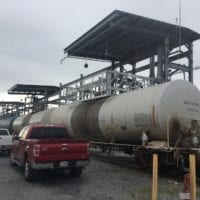
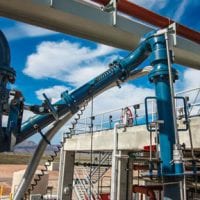
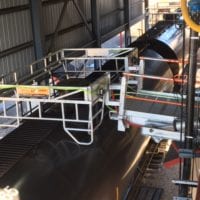
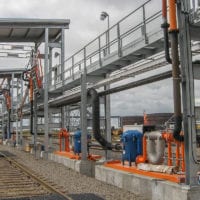

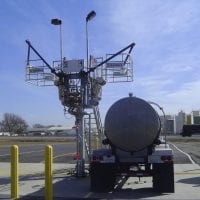

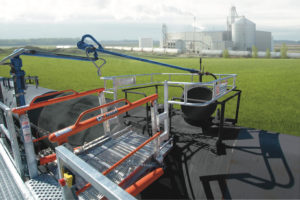
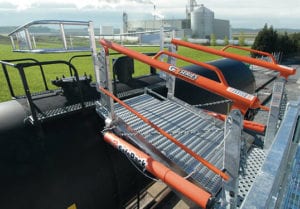
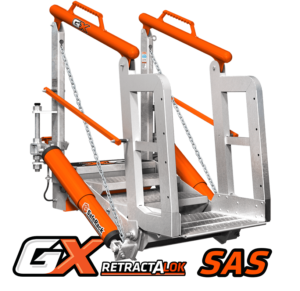
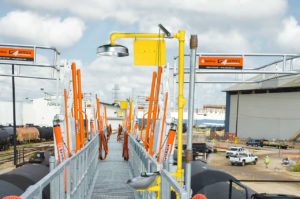
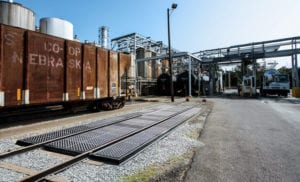
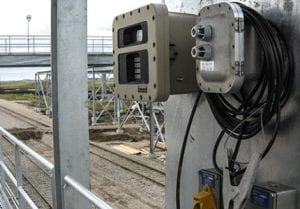
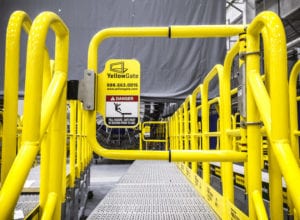
 YellowGate Safety Gates
YellowGate Safety Gates